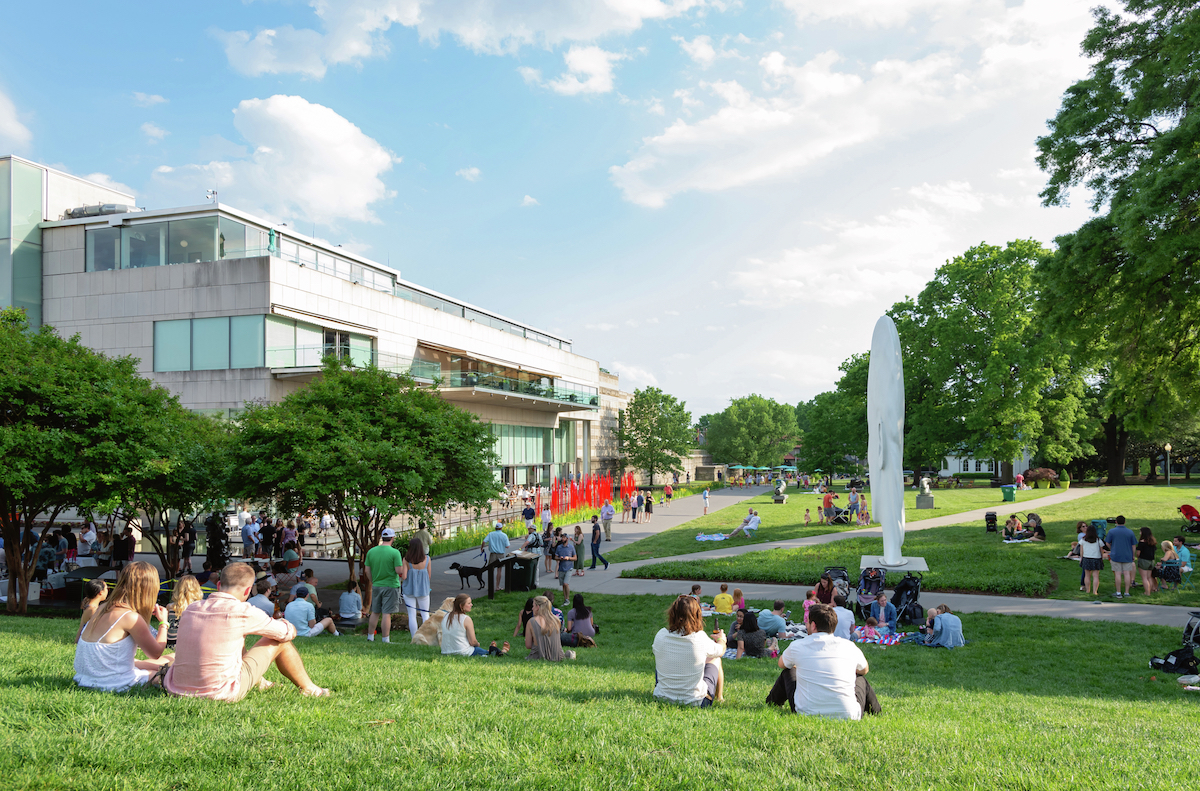In Alex Nyerges’ own telling, his artistic relationship with China began 25 years ago with an opportunistic flight to Beijing. “At the time, Li Jian [a longtime collaborator and current curator of East Asian Art at VMFA] and I decided to get on a plane and go to China,” says Nyerges thinking back on his time as director and CEO of Dayton Art Institute. “We went to Beijing and Xi’an and basically introduced ourselves to various museum curators in those cities. Over the years we have continued to build on these connections.”
Two and a half decades later, the Virginia Museum of Fine Arts (VMFA) is reaping the rewards of its director’s forward thinking. The partnership between Nyerges and Li remains and together they continue to devote substantial resources to forging connections with China. First came VMFA’s 2011 agreement with Beijing’s Palace Museum which brought an exhibition of 200 never-before transported Imperial Palace artefacts stateside. Next was a collaboration with 14 art museums and archaeological institutes from across China’s Shaanxi province — the results of which were a comprehensive exploration of China’s first emperor, Qin Shi Huang, and his Terracotta Army.
The ties are all the more impressive given that, at present, partnerships between Chinese and Western museums are very much in vogue. The past year alone has seen a partial collection merger between LACMA and Yuz Museum; Tate Britain sign an MoU with Pudong Museum of Art, and Pompidou Centre will open a museum on Shanghai’s Bund. In this regard, VMFA’s deals from the early 2010s place it ahead of the curve. Most recently are agreements made in 2018 with Capital Museum and National Museum, which reiterate an enduring commitment to China.
For many Western museums and cultural institutions, such collaborative programs are a means of monetizing collections (including shipping off artworks that rarely leave the storeroom). Tate Britain, for example, hosted its best attended show of 2018 not on the banks of the Thames but six thousand miles away at the Shanghai Museum. Another factor that encourages Western museums to forge connections in China is a will to develop brand awareness. This can be translated into revenue either when culturally conscious Chinese Free Independent Travelers (FITs) are nearby or through the increasingly common practice of selling IP products on e-commerce platforms such as Taobao or Tmall (for reference, the British museum made $50 million in the second half of 2018).
In this regard, VMFA is different. Located in Richmond, the museum, which was founded in 1934 at the height of the Great Depression, may be the state’s flagship art institution, but it is hardly a mecca for Chinese tourists. Even Nygerges willingly admits that VMFA is more focused on enhancing cultural exchange and bringing China to the local community than attempting to drive some great outreach project.
“We don’t have a large population base of Chinese tourists. We are not New York or Washington or San Francisco. But our special exhibitions [of Chinese art] have been enormously well received. There is a passion to learn and experience cultures from other parts of the world.”
Indeed, the Imperial Palace exhibition in 2015 drew more than 100,000 visitors and “Terracotta Army: Legacy of the First Emperor of China” became the second best attended exhibition in the museum’s 83-year-old history with nearly a quarter of a million visitors. In return, VMFA has sent a selection of Jean Schlumberger jewelry to the National Museum, toured its world-renowned collection of Fabergé decorative pieces in China, and is currently preparing an exhibition of American art for Chinese audiences.
Yet the benefits of this cultural exchange extend beyond mere collection shares. “The purpose of these partnerships is to learn from one another,” says Nyerges. “Chinese museums today are at the top of the global echelon of great places for art, they are world class institutions with consummate professionals, and world-class exhibition design.”
Accordingly, through trips to China and staff exchanges with Chinese museums, VMFA strives to improve itself across a range of fields from exhibition design and curation to structuring educational programs and reevaluating the role of technology in museums. On this final point, Nyerges is clear to stress the sophistication of his Chinese counterparts, “technology is important in every aspect of an art museum today from allowing our staff to conduct research to enhancing visitor experience.”
Nyerges was particularly impressed by Palace Museum’s redesign of the Schlumberger exhibition which debuted in Beijing in early summer, “The use of technology was not simply impressive, it was a substantial part of the exhibition and this is something we want to learn more about.”
As VMFA continues to play its individual part in enhancing cross-cultural exchange, Nyerges has his sights set on establishing a broad alliance of Chinese and American museums. VMFA was a founding member of French American Museum Exchange (FRAME) a consortium of 31 museums (15 Chinese, 15 American, and one Canadian) united in the task of promoting cultural exchange. Naturally, Nyerges sees the potential of establishing something similar with China whereby “museum curators, directors, and educators meet several times a year to collaborate, exchange, and test ideas.”
Politically speaking, it may seem a strange time to raise the idea that the U.S. and China might work collaboratively to build bridges and indeed Nyerges is surprisingly candid when reflecting on the effects current political situation. “There could well be an impact on cultural institutions. After all, ourselves, the National Museum, and the Palace Museum are all government agencies. But our business is to share art and teach art history, that is the tie binding us together with a mutual purpose. The more collaboration and cooperation we have, the better we will become.”



